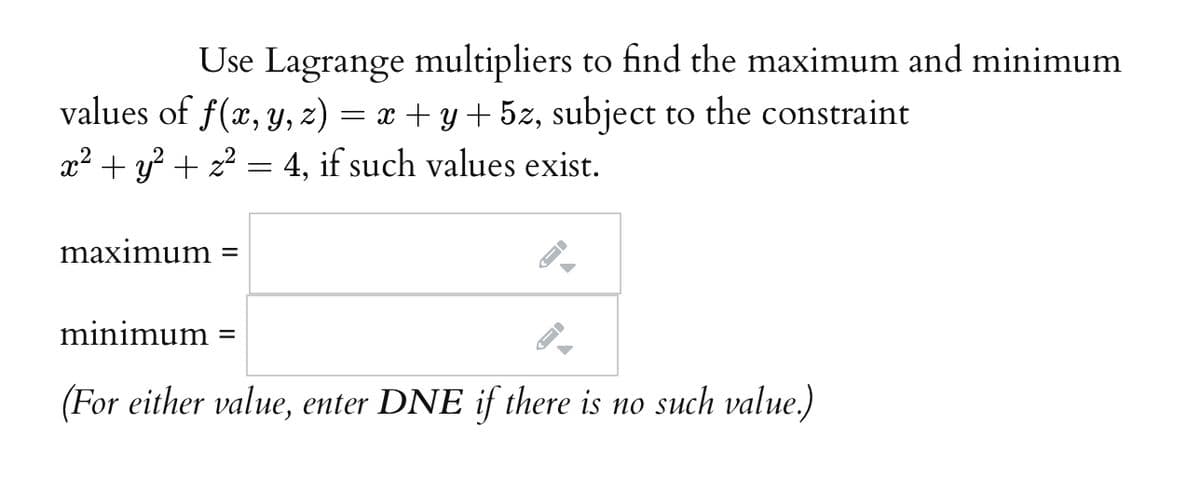Use Lagrange multipliers to find the maximum and minimum values of f(x, y, z) = x + y + 5z, subject to the constraint x2 + y? + 22 = 4, if such values exist. maximum = minimum %3D (For either value, enter DNE if there is no such value.)
Use Lagrange multipliers to find the maximum and minimum values of f(x, y, z) = x + y + 5z, subject to the constraint x2 + y? + 22 = 4, if such values exist. maximum = minimum %3D (For either value, enter DNE if there is no such value.)
Algebra: Structure And Method, Book 1
(REV)00th Edition
ISBN:9780395977224
Author:Richard G. Brown, Mary P. Dolciani, Robert H. Sorgenfrey, William L. Cole
Publisher:Richard G. Brown, Mary P. Dolciani, Robert H. Sorgenfrey, William L. Cole
Chapter10: Inequalities
Section10.8: Systems Of Linear Inequalities
Problem 2E
Related questions
Question

Transcribed Image Text:Use Lagrange multipliers to find the maximum and minimum
values of f(x, y, z)
= x + y+ 5z, subject to the constraint
x² + y? + z? = 4, if such values exist.
maximum
minimum
(For either value, enter DNE if there is no such value.)
Expert Solution
This question has been solved!
Explore an expertly crafted, step-by-step solution for a thorough understanding of key concepts.
Step by step
Solved in 5 steps

Recommended textbooks for you

Algebra: Structure And Method, Book 1
Algebra
ISBN:
9780395977224
Author:
Richard G. Brown, Mary P. Dolciani, Robert H. Sorgenfrey, William L. Cole
Publisher:
McDougal Littell


Algebra for College Students
Algebra
ISBN:
9781285195780
Author:
Jerome E. Kaufmann, Karen L. Schwitters
Publisher:
Cengage Learning

Algebra: Structure And Method, Book 1
Algebra
ISBN:
9780395977224
Author:
Richard G. Brown, Mary P. Dolciani, Robert H. Sorgenfrey, William L. Cole
Publisher:
McDougal Littell


Algebra for College Students
Algebra
ISBN:
9781285195780
Author:
Jerome E. Kaufmann, Karen L. Schwitters
Publisher:
Cengage Learning